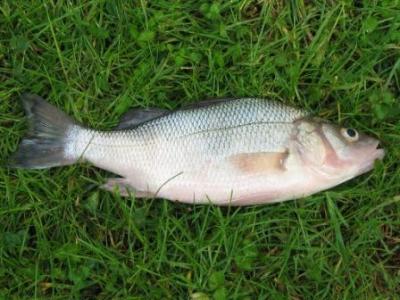
The white perch is common in lakes, rivers, and tidal creeks of the Mid Atlantic. This small member of the temperate bass family is caught near piers, jetties, oyster beds, and other structure.
Baits for catching white perch include bloodworms, squid, shrimp, peeler crab, sea clams and other baits.
White perch are also caught with a variety of artificial lures. Effective lures for catching white perch include small bucktail jigs, panfish jigs, spinnerbaits, crankbaits, inline spinners, tube lures, and slug-type soft plastics.
Lures should match local prey in size and action. When white perch are found in turbid or dark colored water, colors such as white, chartreuse, or bright yellow are often productive.
White perch are anadromous or semi-anadromous; they are able to move between freshwater and brackish or saltwater environments.
In most areas, they migrate seasonally, moving into deeper, higher salinity water in winter. In late winter or early spring, perch begin migrating up rivers and creeks to spawn and feed. During their spawning runs, white perch form schools and often feed aggressively.
White Perch vs. Black Perch
In many areas, this popular sport and food fish is known as black perch. When perch move into creeks and swamps with dark colored water, their coloration usually changes to a dark slate with black highlights. Tidal black perch are usually much darker than white perch found in lakes and other clear waterways.
Although white perch seldom exceed 10 inches in length, they make excellent table fare. White perch can be headed and gutted or filleted. Fresh perch is delicious fried, grilled, or baked. White perch roe (eggs) is a seasonal delicacy throughout the Mid Atlantic region.